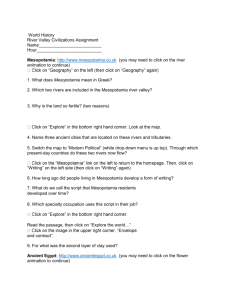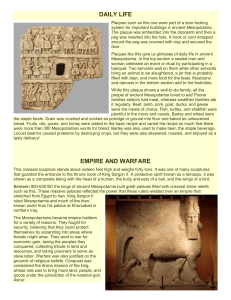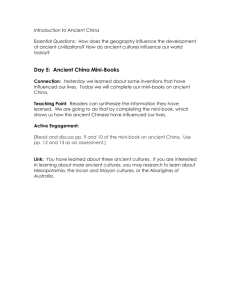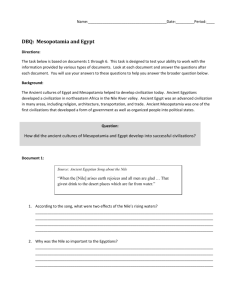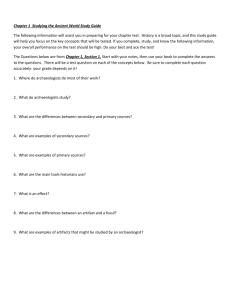Archaeological Perspectives of Ancient
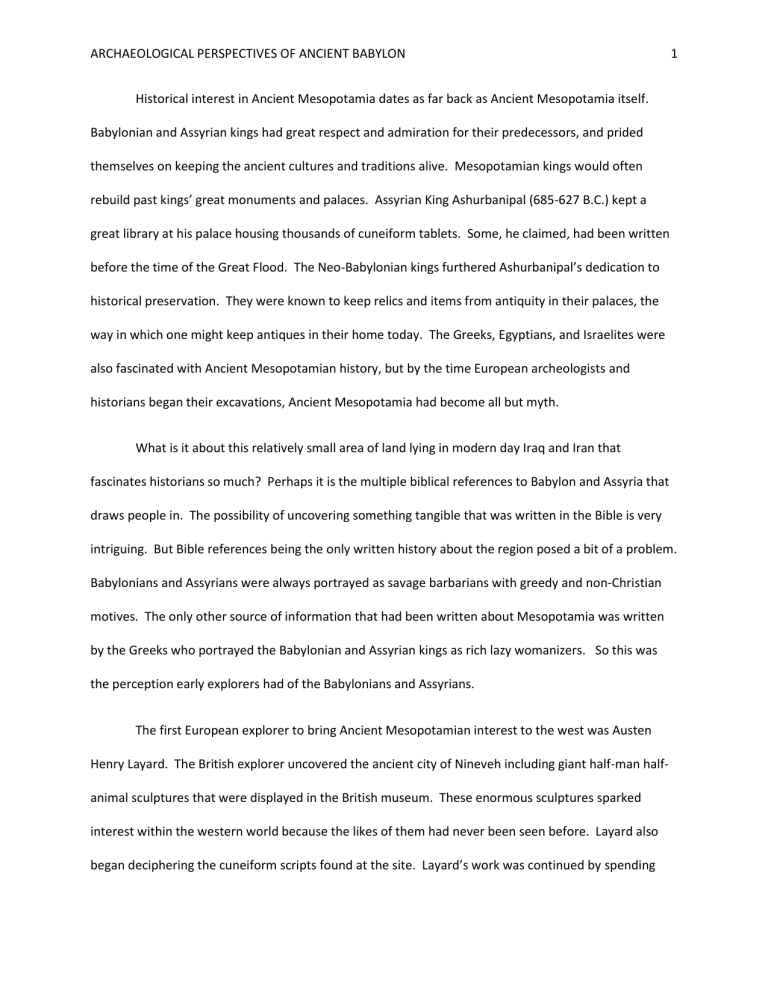
ARCHAEOLOGICAL PERSPECTIVES OF ANCIENT BABYLON
Historical interest in Ancient Mesopotamia dates as far back as Ancient Mesopotamia itself.
1
Babylonian and Assyrian kings had great respect and admiration for their predecessors, and prided themselves on keeping the ancient cultures and traditions alive. Mesopotamian kings would often rebuild past kings’ great monuments and palaces. Assyrian King Ashurbanipal (685-627 B.C.) kept a great library at his palace housing thousands of cuneiform tablets. Some, he claimed, had been written before the time of the Great Flood. The Neo-Babylonian kings furthered Ashurbanipal’s dedication to historical preservation. They were known to keep relics and items from antiquity in their palaces, the way in which one might keep antiques in their home today. The Greeks, Egyptians, and Israelites were also fascinated with Ancient Mesopotamian history, but by the time European archeologists and historians began their excavations, Ancient Mesopotamia had become all but myth.
What is it about this relatively small area of land lying in modern day Iraq and Iran that fascinates historians so much? Perhaps it is the multiple biblical references to Babylon and Assyria that draws people in. The possibility of uncovering something tangible that was written in the Bible is very intriguing. But Bible references being the only written history about the region posed a bit of a problem.
Babylonians and Assyrians were always portrayed as savage barbarians with greedy and non-Christian motives. The only other source of information that had been written about Mesopotamia was written by the Greeks who portrayed the Babylonian and Assyrian kings as rich lazy womanizers. So this was the perception early explorers had of the Babylonians and Assyrians.
The first European explorer to bring Ancient Mesopotamian interest to the west was Austen
Henry Layard. The British explorer uncovered the ancient city of Nineveh including giant half-man halfanimal sculptures that were displayed in the British museum. These enormous sculptures sparked interest within the western world because the likes of them had never been seen before. Layard also began deciphering the cuneiform scripts found at the site. Layard’s work was continued by spending
ARCHAEOLOGICAL PERSPECTIVES OF ANCIENT BABYLON several years deciphering the monumental scripts carved in the side of a mountain at Behistun in Iran.
2
Once these mountain scripts were deciphered it was easy for the smaller tablets to be translated.
Archaeologists were shocked when they found stories such as the Great Flood Story and the story of the
Tower of Babel written on the tablets. European museums began competing for the most valuable items, sponsoring expeditions to ancient sites. The most sought out items were those that corroborated biblical stories, as this was a time in which the validity of the Bible was being questioned by things like
Darwin’s theory of evolution.
The preconceived notions that archaeologists held before excavating ancient cities in
Mesopotamia began to disappear as these artifacts became readily available in museums around the western world. British writer and traveler Gertrude Bell had seen many artifacts displayed in the British
Museum, and didn’t have any preconceived notions about Ancient Mesopotamia based on the Bible or
Greek and Roman writings. She visited Mesopotamia having seen actual sculptures and artifacts, and having read actual cuneiform inscriptions written by the Babylonians and Assyrians. At this point stereotypes had been replaced (somewhat) by truth.
Throughout Bell’s almost 10 years living in Iraq (1917-1926) she was very influential in the emerging Iraqi government and its relations with the British and other European governments. She also remained active in the export of artifacts to British museums, although as the ideas of archaeology of the region began to shift, so did the funding for excavations. Scientists and historians began to ask questions not about the great kings of Ancient Mesopotamia, but more about the common folk.
Questions like how and why did civilizations arise? What did women do? What kind of industry was practiced? This shift in how Ancient Mesopotamia was studied helped to shift the way in which the past was studied. It went from being an industry for money and prestige to one of historical relevance.
Although Bell committed suicide in 1926, her legacy of archeology and discovering the past lives on.
ARCHAEOLOGICAL PERSPECTIVES OF ANCIENT BABYLON
The Hebrew Bible is considered a historically accurate document. But one must look at the context and historical setting of the region before making assumptions about a people or location. For
3 example, the Bible depicts Assyrians as blood thirsty greedy men, but in order to discover the true
Assyrians we must study the civilization, culture and beliefs of the Assyrians themselves, and not just what the Greeks and the Hebrews thought of them. Thanks to Gertrude Bell and others like her, this is the way in which we rediscover the past today.
